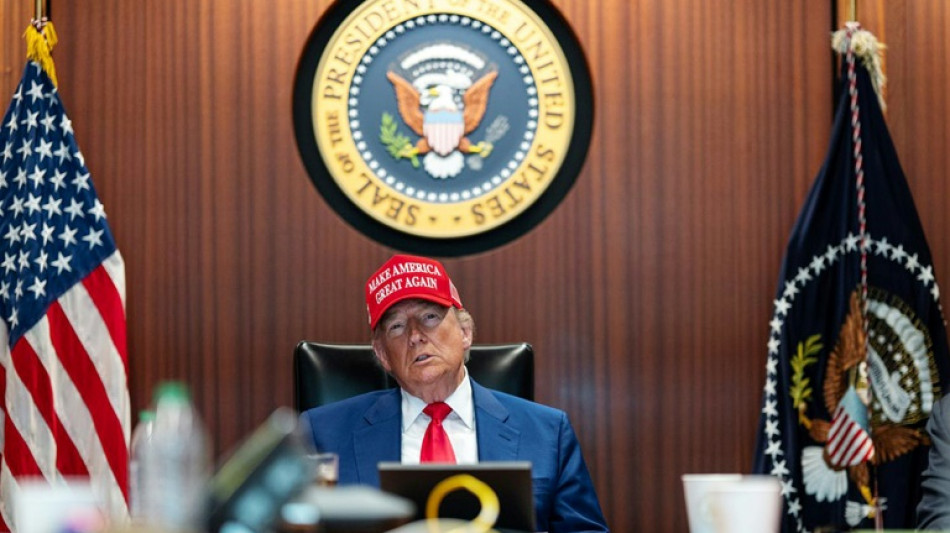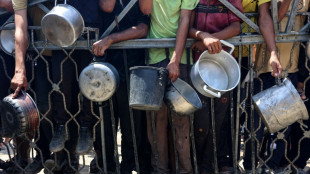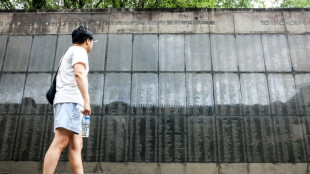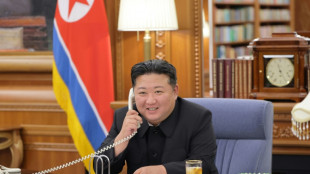
| RBGPF | 0% | 73.08 | $ | |
| BCC | 4.18% | 84.26 | $ | |
| RYCEF | 4.28% | 14.94 | $ | |
| BCE | 0.61% | 24.5 | $ | |
| NGG | -1.35% | 70.28 | $ | |
| RELX | -0.44% | 47.83 | $ | |
| VOD | 0.26% | 11.54 | $ | |
| RIO | 1.52% | 63.1 | $ | |
| SCU | 0% | 12.72 | $ | |
| SCS | 1.42% | 16.19 | $ | |
| JRI | -0.07% | 13.38 | $ | |
| CMSD | -0.05% | 23.56 | $ | |
| CMSC | 0.09% | 23.08 | $ | |
| GSK | 1.33% | 38.22 | $ | |
| AZN | 1.69% | 75.34 | $ | |
| BTI | -0.71% | 57.92 | $ | |
| BP | 0.35% | 34.07 | $ |

Bluff and last-minute orders: Trump's path to Iran decision
When Donald Trump said on Thursday he'd give himself two weeks to decide on bombing Iran, critics wrote it off as the US president using a familiar timeframe to put off difficult decisions.
The next evening he left the White House for a fundraising dinner at his New Jersey golf resort, and much of the world seemed to believe that there was still space for diplomacy.
In reality, Trump was already on the verge of making his mind up.
A few hours after his arrival at Trump National Golf Club Bedminster on Friday night, the first B-2 stealth bombers took off from a US airbase.
The next day, while the bombers were still in the air, Trump made the call on attacking three Iranian nuclear facilities, in the first direct US military strike on Iran since the 1979 Islamic Revolution.
"The president gave the final order to the Secretary of Defense on Saturday," a senior White House official told AFP on condition of anonymity.
"In the week leading up to the strike, the president was continuing to pursue diplomacy, mainly through Special Envoy (Steve) Witkoff's efforts, while the Pentagon was simultaneously preparing the operation," added the official.
- 'Misdirection' -
Trump's "two weeks" gambit appeared to be part of a broader campaign of what Defense Secretary Pete Hegseth called "misdirection," which included several B-2s flying in the opposite direction as a decoy.
Trump, the tycoon who prides himself as an expert on the "art of the deal," had ladled on the strategic ambiguity all week.
First he flew home early from the G7 summit for talks with his national security team. Then he unleashed a barrage of bellicose social media posts against Iran's supreme leader. On Wednesday he said that "I may do it, I may not" when asked about striking Iran.
Finally, Press Secretary Karoline Leavitt read out a statement from Trump in the White House briefing room on Thursday, saying there was a "substantial" chance of talks and that he would decide "whether or not to go within the next two weeks."
It played into a frequent criticism of Trump for setting two-week deadlines on everything from Ukraine to health care and then ignoring them.
But behind the scenes, Trump was increasingly determined, US officials said.
Trump had opposed Israel attacking Iran right up until it did so on June 13 -- but afterwards he openly admired Israel's success and was talking daily to Prime Minister Benjamin Netanyahu.
Israel's achievement of air superiority over Iran presented Trump with a unique opportunity to hit the nuclear program that he had railed against since his first term.
Trump was "briefed daily on the Israelis' efforts and the operation itself as he decided whether to move forward," the senior White House official said.
The US commander-in-chief held daily meetings with his National Security Council in the White House's basement Situation Room as he pondered his options.
And to head off opposition in his "Make America Great Again" movement to another Middle Eastern "forever war", he reportedly met his influential former aide Steve Bannon.
- 'Highly classified' -
In public, Trump and the White House took pains to keep things under wraps.
The normally talkative Trump said nothing to reporters as he returned to the White House on Saturday night, just one minute after his scheduled 6 pm arrival.
The timing was precise for a reason.
The first B-2 bomber dropped its bombs just 40 minutes later, at 6:40 pm US time, or 2:10 am Sunday Iranian time. The last submarine-fired Tomahawk missiles struck at 7:05 pm.
Trump announced the "very successful" strikes in a Truth Social post at 7:50 pm.
The White House then released pictures of a pensive looking Trump in the Situation Room, wearing his red "Make America Great Again" baseball cap.
"This was a highly classified mission with very few people in Washington knowing the timing or nature of this plan," US Joint Chiefs Chairman Dan Caine said on Sunday.
But the tough decisions are far from over for Trump, who was meeting his top team again on Monday in the Oval Office.
How will he respond to Iran's retaliation on Monday? If the US strikes did not completely destroy Iran's nuclear sites as he claimed, will he launch more?
Above all, will Trump go further than striking Iran's nuclear plants?
"If the current Iranian Regime is unable to MAKE IRAN GREAT AGAIN, why wouldn't there be a Regime change???" Trump wrote on Truth Social on Sunday.
Y.Kostopoulos--AN-GR



